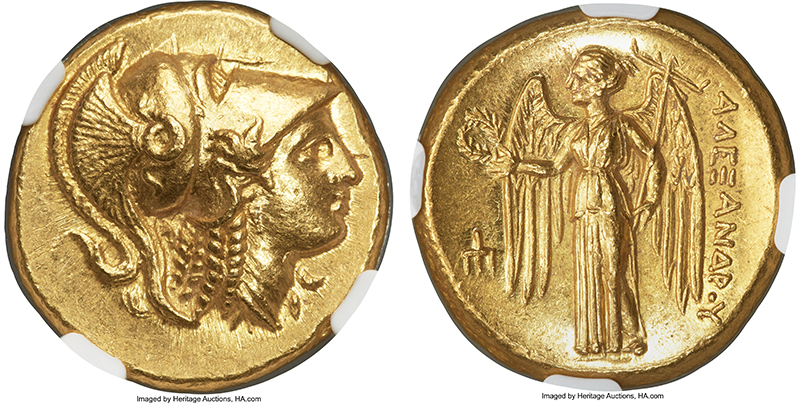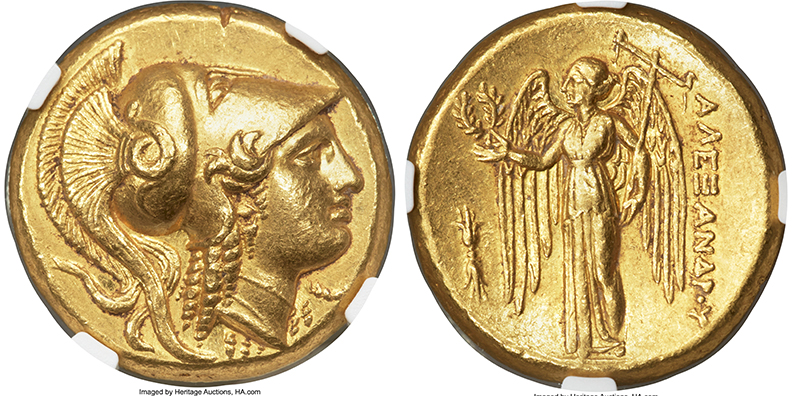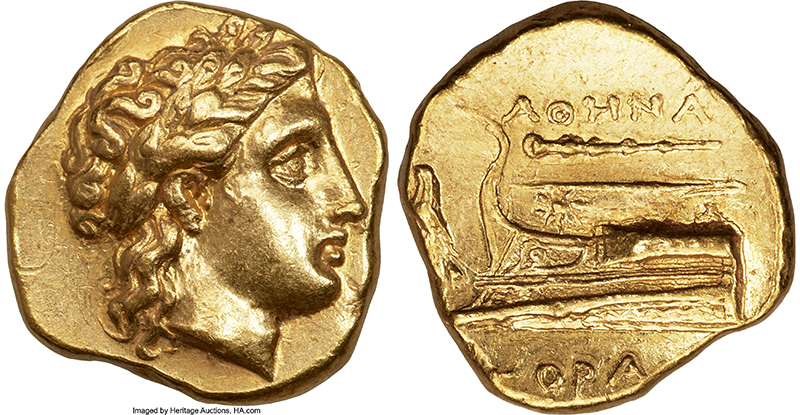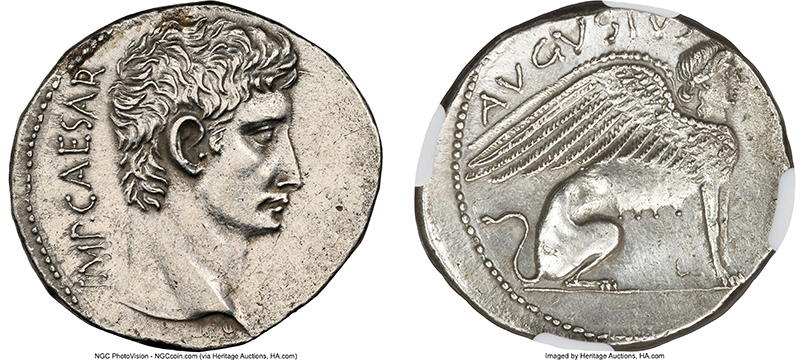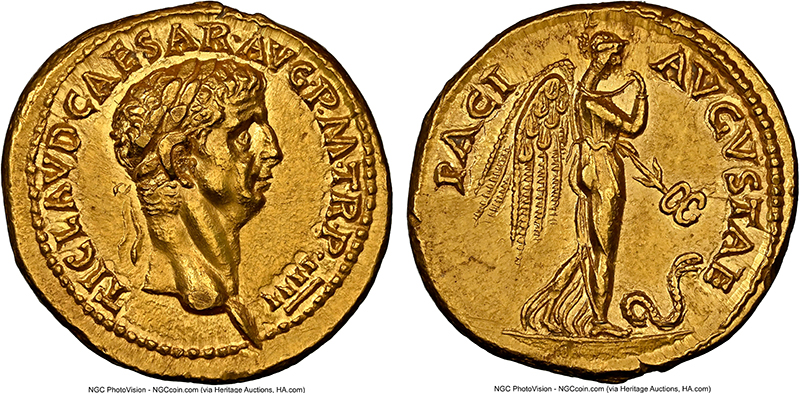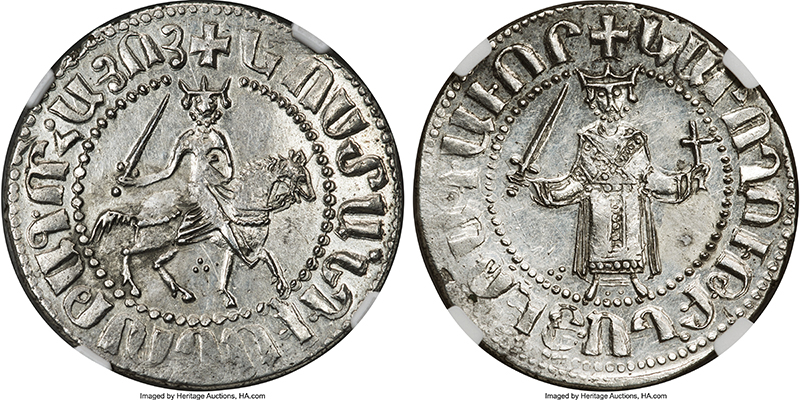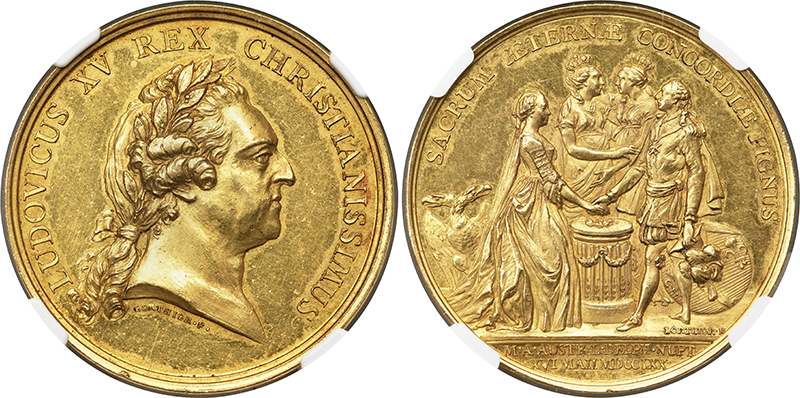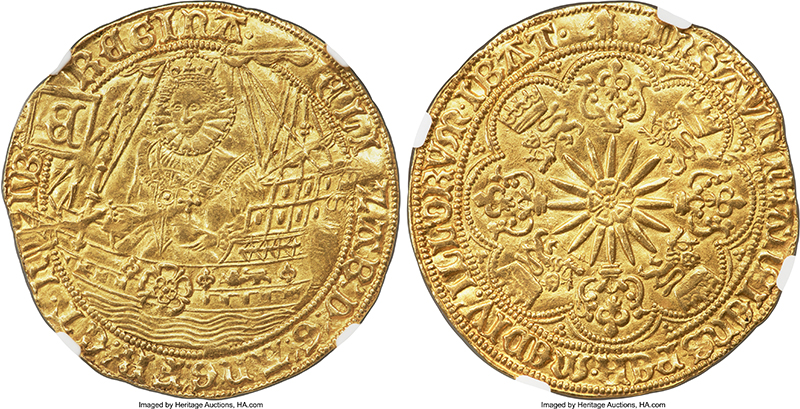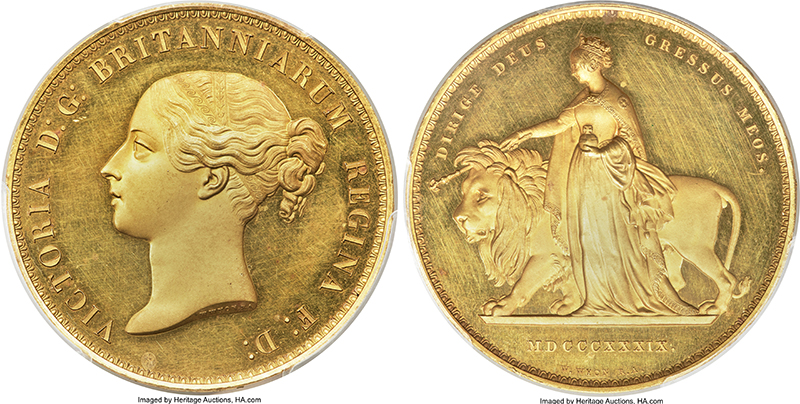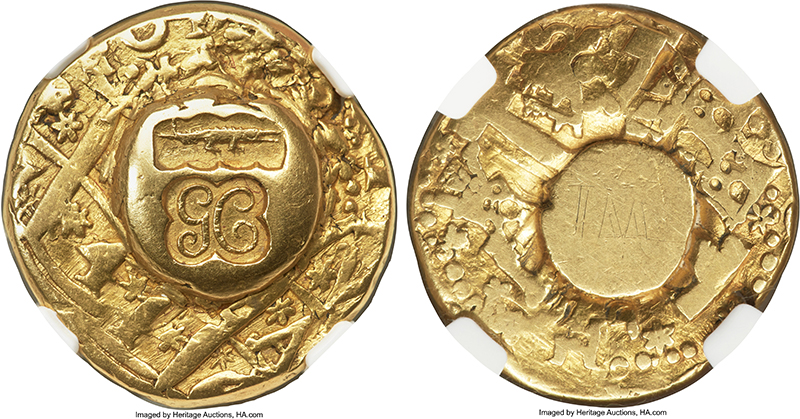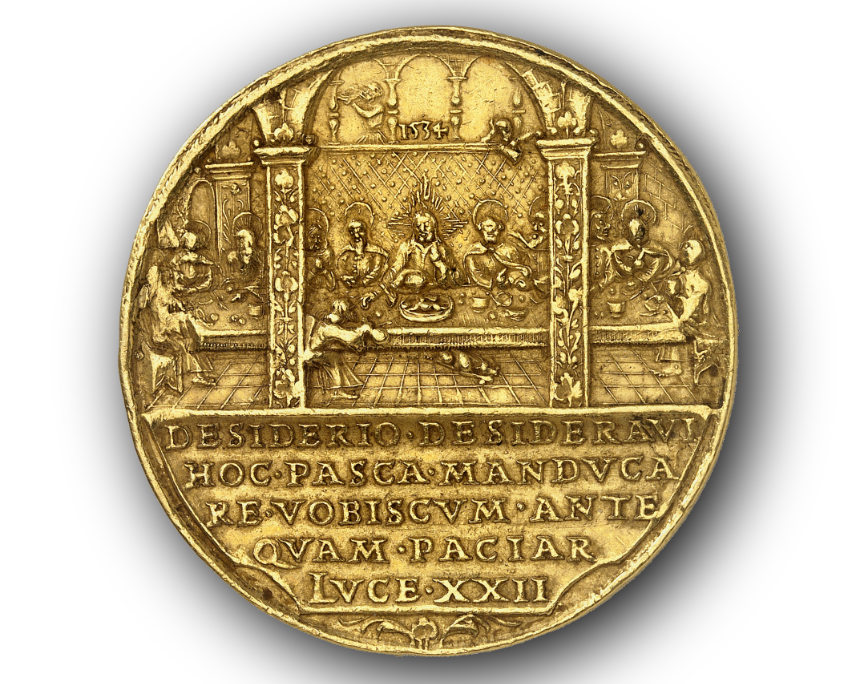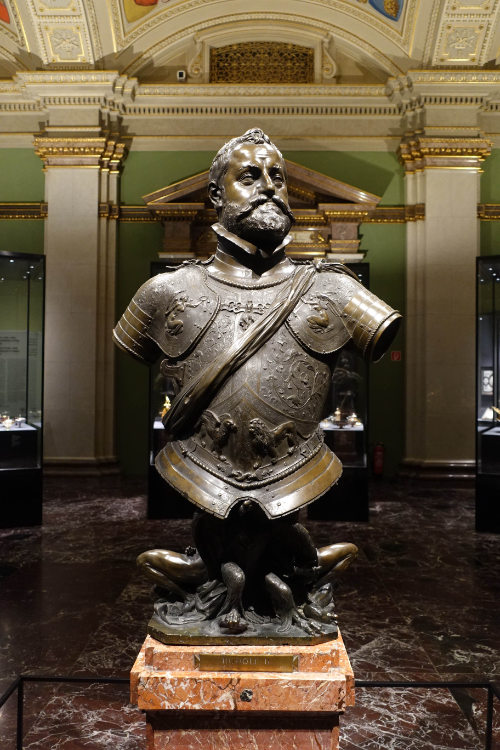Joachimsthal and the Reformation
by Ursula Kampmann on behalf of Künker
To us, Renaissance medals are valuable works of art. But when these medals were created, they were objects of everyday use. While their beauty was appreciated, it was more important that they performed their function properly. This article explores why Joachimsthal, whose silver mines gave the t(h)aler its name, was an important producer of Renaissance medals. The pieces created there are known among numismatists as “erzgebirgische Prägemedaillen”, minted medals from the Ore Mountains. We will place them in their historical context.
Content
Joachimsthal as a Center of the Reformation
Bohemia, bordering Saxony, was a fertile breeding ground for Luther’s teachings. After all, even in the 15th century, two-thirds of Bohemia’s inhabitants no longer considered themselves Catholic. They favoured a different belief, one that had been punished by the Pope and that, like the Lutherans, celebrated communion under both kinds – flesh and blood, bread and wine.
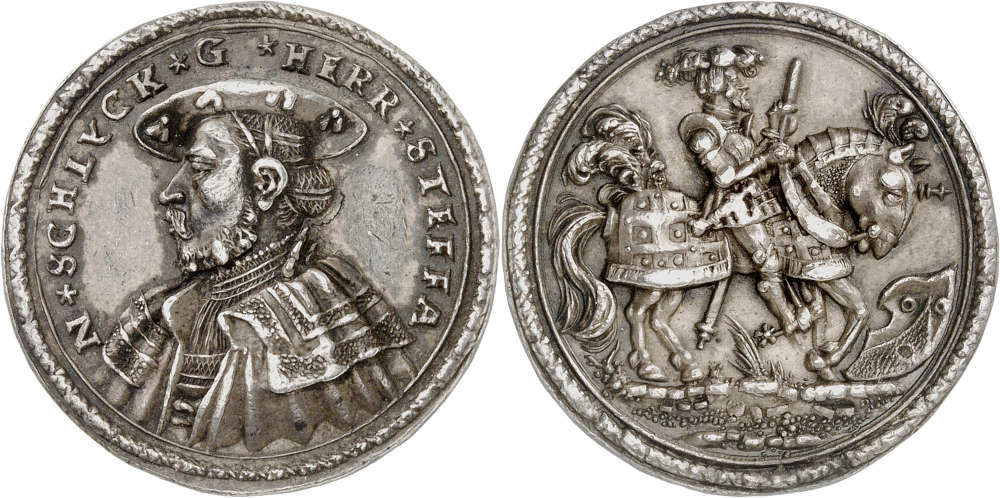
Silver medal commemorating Stephan von Schlick, the founder of Joachimsthal, no year (after 1526), unsigned by Wolf Milicz. Dedicated by Stephan’s widow in commemoration of her husband’s death in the Battle of Mohács of 1526. Probably the second specimen on the market. Extremely fine. Estimate: 15,000 euros. From Künker auction 418 (29 January 2025), No. 413.
The nobility in particular were Utraquists (from the Latin “sub utraque specie”, meaning “under both kinds”), as these believers called themselves. And this nobility became ardent followers of Luther, whose most important supporters were the counts of Schlick. After all, Wittenberg in Saxony was only a three-day journey from Joachimsthal. So it is not surprising that in 1522 the silver city, founded in 1516, introduced an evangelical church order – the very first evangelical church order in all of Bohemia.
The Schlick family also brought one of Luther’s closest collaborators to Joachimsthal in 1532. Johannes Mathesius was the principal of the local Latin school until 1540, and after his ordination by Luther himself in 1542, he was head of the Joachimsthal parish until his death in 1565. Mathesius was a true admirer of the Reformer. He wrote the first biography of Luther and the well-known Table Talks. Under him, Joachimsthal became a model evangelical parish.
We can assume that Mathesius was in close contact with the many goldsmiths and silversmiths who had come to Joachimsthal for its rich supply of raw materials. We know from his 10th wedding sermon, that Mathesius was very enthusiastic about the medals these smiths produced. In this sermon, he said (translated from Early New High German) “that many beautiful stories from the Old and New Testaments, as well as appropriate and insightful pagan stories are minted on medals produced from ore in this valley [Joachimsthal]. I [Mathesuis] could mention many beautiful medals and silver works of art that were made in this valley and that show both great craftsmanship and many beautiful beliefs of faith of the true religion. … In such a case, the artists should not be blamed, for everyone should do their best to increase the praise of God by preaching, writing, minting and painting. [They are] not only serving their art like incompetent painters and goldsmiths, but [just as] Dürer and Lucas [Cranach] they also serve their passionate faith with many beautiful and touching works of art.”
In other words: the medals made in Joachimsthal that were exported throughout the Holy Roman Empire had the approval of the Reformer because they spread Luther’s message. We can assume that Mathesius made sure of this and advised the mint masters on the choice of motifs. We know from other contexts how closely reformers and artists worked together.
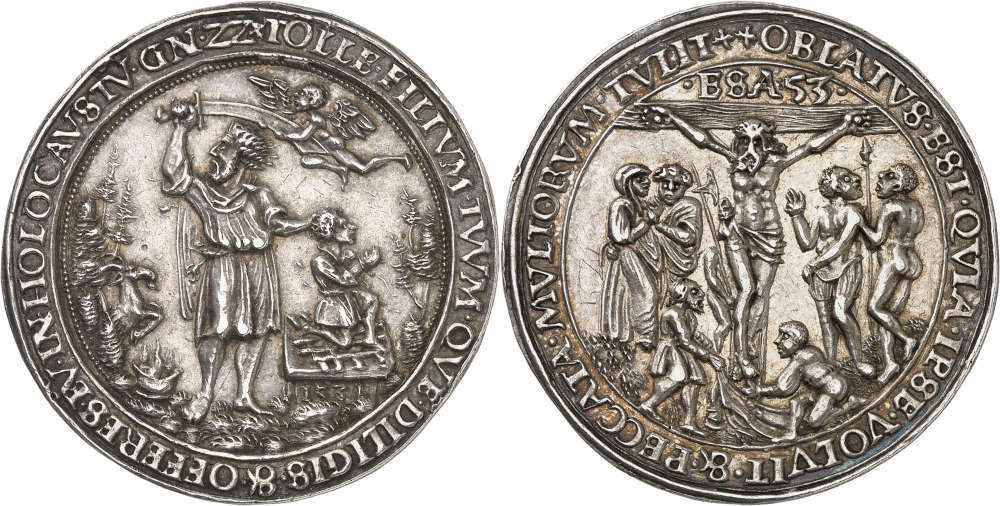
1531 silver medal, unsigned, assigned to Hieronymus Magdeburger. Very rare. Minted original. Extremely fine. Estimate: 5,000 euros. From Künker auction 418 (29 January 2025), No. 192.
Hieronymus Magdeburger, the “Father” of Ore Mountain Medals
The fact that today the German-Czech border separates Annaberg from St. Joachimsthal should not prevent us from understanding that the citizens of both towns were closely connected. After all, the businessmen who had made their fortune in Annaberg had discovered the silver mines of St. Joachimsthal and were exploiting them in the 16th century. This is why one of the die-cutters from Annaberg became the “father” of the minted medals from the Ore Mountains.
We are talking about Hieronymus Magdeburger. You can see one of his medals here that will be offered in Künker’s upcoming auction sale as lot No. 192. Magdeburger came from a Freiberg family. He was die-cutter and goldsmith, and it can be proved that he was in Annaberg between 1507 and 1533, the period when the medal was made. We also know that he belonged to the town’s upper class and was a member of the council. And we know that he was in close contact with the Joachimsthal mint during this period. It is known that he supplied the mint with pattern dies and likely also created other dies. In 1533, Magdeburger resigned from all his offices and left the city. It is not known where he went after that, it might be Joachimsthal. What we do know is that Magdeburger died in September 1540.
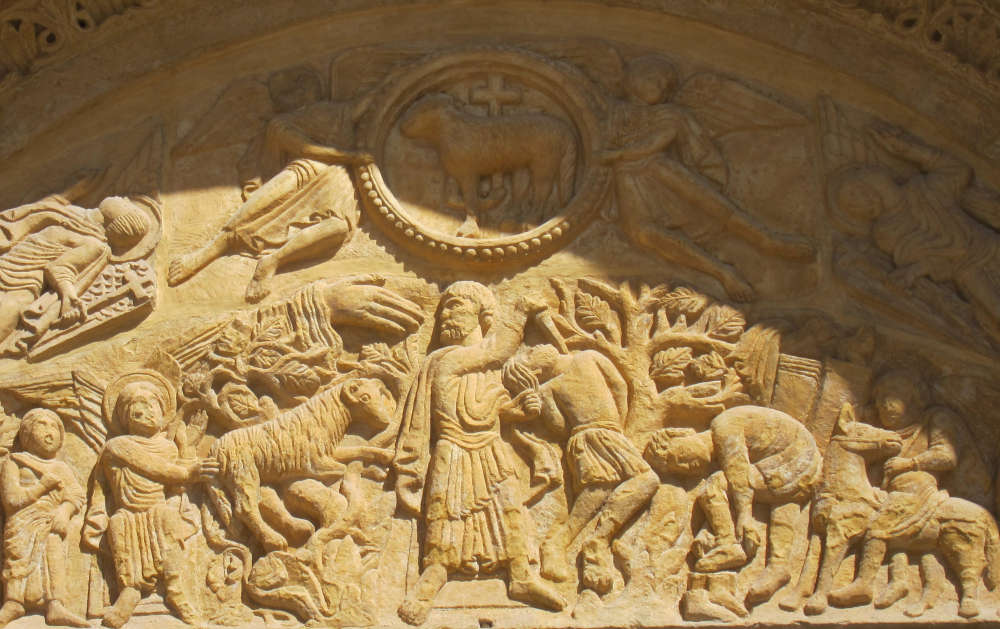
Relief in the tympanum of the Romanesque church San Isidoro in León: the Lamb of God as a symbol of the sacrificial death of Christ over the sacrifice of Abraham. Photo: KW.
Magdeburger’s work follows a tradition that we know from medieval churches: the history of salvation of the New Testament is contrasted with models from the Old Testament. The events of the Old Testament are used as analogies and symbols for the salvific events in the New Testament. In our case, it is the connection between Abraham’s sacrifice of his son Isaac and Christ’s sacrificial death. Both scenes were perceived by contemporaries as the ultimate sign of God’s grace. God commanded his angel to prevent Abraham from sacrificing his first-born son. The human sacrifice is replaced by a ram caught in a thicket, a scene that this medal describes in detail. The grace that God shows to Abraham is increased by the sacrificial death of Jesus Christ: God redeems humanity by sacrificing his own son.
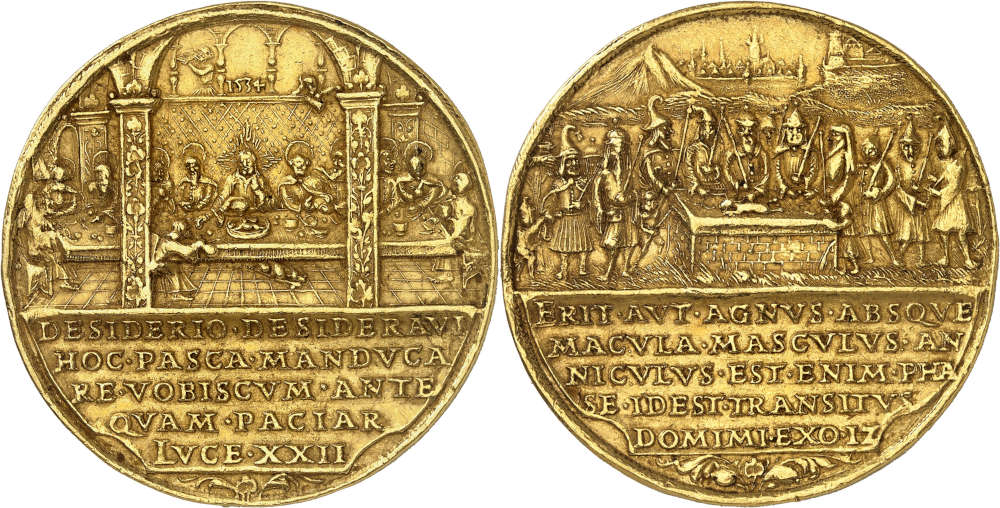
Gold medal of 10 ducats, 1534, unsigned, probably by Wolfgang Roll. Extremely rare. Minted original. Minor assay trace at the edge. Extremely fine. Estimate: 75,000 euros. From Künker auction 418 (29 January 2025), No. 193.
We find another juxtaposition of the Old and New Testaments on a medal of which one gold specimen has survived – what an extremely rare exception! The obverse shows the first Passover of the Israelites before the Exodus from Egypt. While all first-born sons of Egypt were to be consumed by death that night, the Lord gave life to the children of Israel. To separate the faithful from the unbelievers, the Israelites were to put the blood of the Paschal lamb on their doors. We know how this lamb was to be eaten from Exodus 12: “That same night they are to eat the meat roasted over the fire, along with bitter herbs, and bread made without yeast. … This is how you are to eat it: with your cloak tucked into your belt, your sandals on your feet and your staff in your hand. Eat it in haste; it is the Lord’s Passover.” This is the scene depicted on the medal. The Paschal lamb is roasting on the fire, while the Israelites – note the ahistorical 16th-century Jewish hats – stand around the fire with their staffs, ready to leave.
The first Passover is contrasted with the Paschal Meal that Christ used to establish the New Covenant. Christians refer to this Paschal Meal as the Last Supper. The detailed scene – note the dog eating a bone under the table – is probably based on contemporary depictions. Judas is seated opposite Christ, holding a purse in his right hand. Christ gives him a morsel as a sign of betrayal.
The medal is traditionally attributed to Wolfgang Roll, although it is disputed whether mint master Roll was also a die-cutter. However, the citizen of Wiener Neustadt was probably a trained goldsmith and silversmith. Otherwise, he would not have been appointed mint master of Joachimsthal in 1543 and 1544. There is no reason why the young Wolfgang Roll should not have created the dies for this fantastic medal.
Roll was to become one of the emperor’s closest collaborators. He was ennobled in 1544, and from 1551 he held the office of “Unterkammergraf” in the silver town of Kremnica. This office meant that Roll was in charge of the entire mining industry and coin production, while also ensuring compliance with all royal laws and privileges.
We know that Roll, who was a Protestant, had a personal connection to Johannes Mathesius and owned a number of reformatory works. And his estate register tells us that he also was in the good graces of the Habsburg dynasty. The register mentions numerous silver vessels, including imperial gifts. For his first wedding in 1553, for example, the Archbishop of Gran gave him a silver drinking set, and Emperor Ferdinand gave him a goblet worth 80 to 90 guldens. For his second wedding in 1578, Emperor Rudolf II sent him a goblet worth 50 guldens, and Archduke Ernest of Austria one worth 80 guldens.
By the way, Roll was not the only Protestant there. Almost all the miners were Protestants. They enjoyed freedom of religion from their rulers because they depended on their expertise.
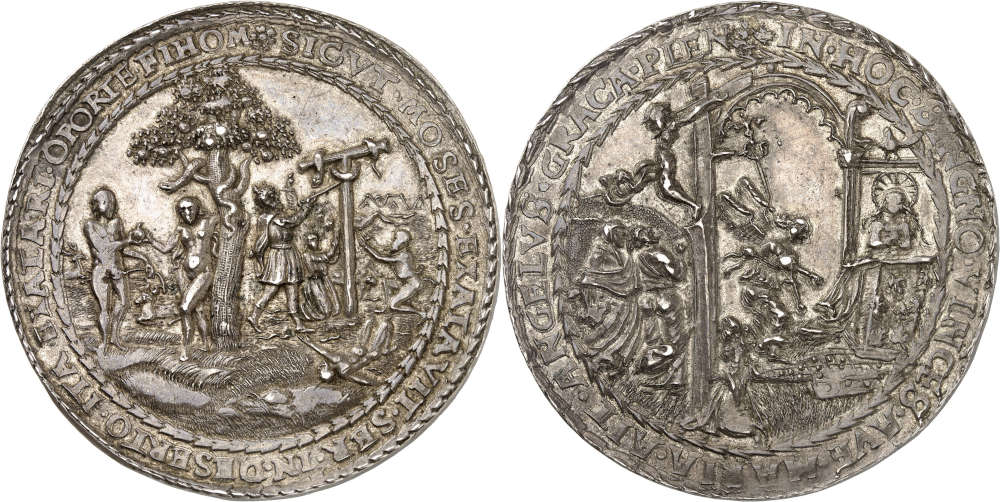
Silver medal with amulet function against the Plague, unsigned. Very rare. Minted original. About extremely fine. Estimate: 4,000 euros. From Künker auction 418 (29 January 2025), No. 189.
Rolls’ and Magdeburger’s innovative medals were modelled after the Plague talers and medals that were distributed throughout the empire with great success. Traditionally, they show on one side the Nehushtan (bronze serpent) that Moses erected at God’s command to heal the Israelites. On the right side of the medal, offered by Künker as lot No. 189, we can see the Israelites pleading with the Nehushtan. The depiction is associated with another serpent, the one that was said to have tempted Adam and Eve in paradise.
In the view of theologians, both depictions could be compared to the crucifixion of Christ. They promised believers eternal salvation at the sight of Christ hanging on the cross, just as the Nehushtan brought physical health. Moreover, Christ’s sacrificial death on the cross was seen as the logical consequence of Adam and Eve’s fall into sin. Just as the original sin was said to have entered the world through them, it was abolished through Christ’s death.
It is unusual for such a theme to be combined with an Annunciation scene. It can be explained by the fact that, as the preachers of the time claimed, original sin entered the world through a woman and was abolished by a woman.
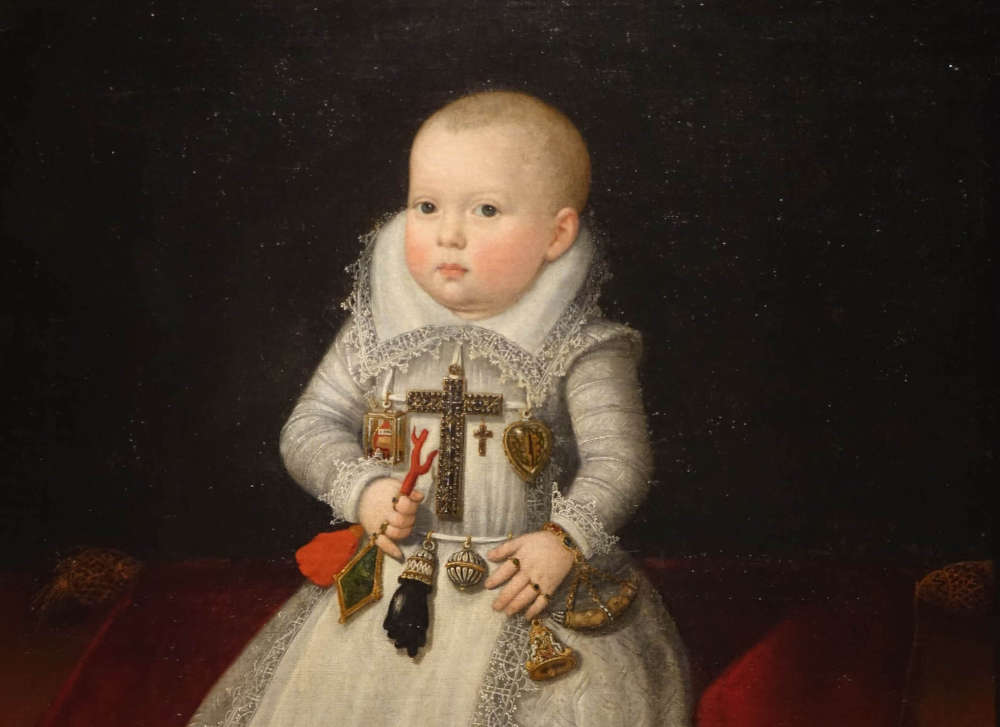
Even royal familes used amulets to protect infants from an early death. A painting of Anne of Austria, daughter of Philip III of Spain, born in 1601. Galeria de las Colecciones Reales, Madrid. Photo: KW.
Religious medals and Plague talers were among the small group of “magical remedies” permitted by the Church. They functioned as amulets, protecting those who wore them against the unpredictable dangers of everyday life, such as illness, accidents, and sudden death. The reformers did not ban these items, but reinterpreted them as a means of salvation. Thus, Mathesius said in his Plague Speech (translated from Early New High German) about works of art like the medal shown here: “If our God wants to save anyone from the death of this poisoned body through the Plague, let him be content with this and look with eyes of faith at the hanged serpent that is the only begotten Son of God. Those who believe in it cannot be harmed by death or sorrow. For this serpent of salvation, which has neither poison nor gall in it, draws out all the poison that Satan has breathed into our souls and bodies.”
To be prepared for the worst, these amulets were always carried around. That is why so many minted medals from the Ore Mountains show traces of gilding, handles or eyelets. In some cases, only traces of these attachments remain because collectors carefully removed them in the 19th century.
Such Christian talismans were wonderful gifts from a godparent, combining the message of faith with a tangible material value that could be exchanged for cash at any silversmith in an emergency. That is why these medals come in a variety of sizes, weights and materials. Potential buyers could choose a version according to their financial means.
The popularity of these objects is demonstrated by the fact that even after the production in St. Joachimsthal ceased in the 70s of the 16th century, they were still being cast from the minted originals. The casts were recast, which is why the quality of the reliefs became worse and worse. Unfortunately, these unsatisfactory imitations, which we have seen far too often, obscure our view and prevent us from appreciating the incredible work of the best masters in their field that is demonstrated by the minted originals.
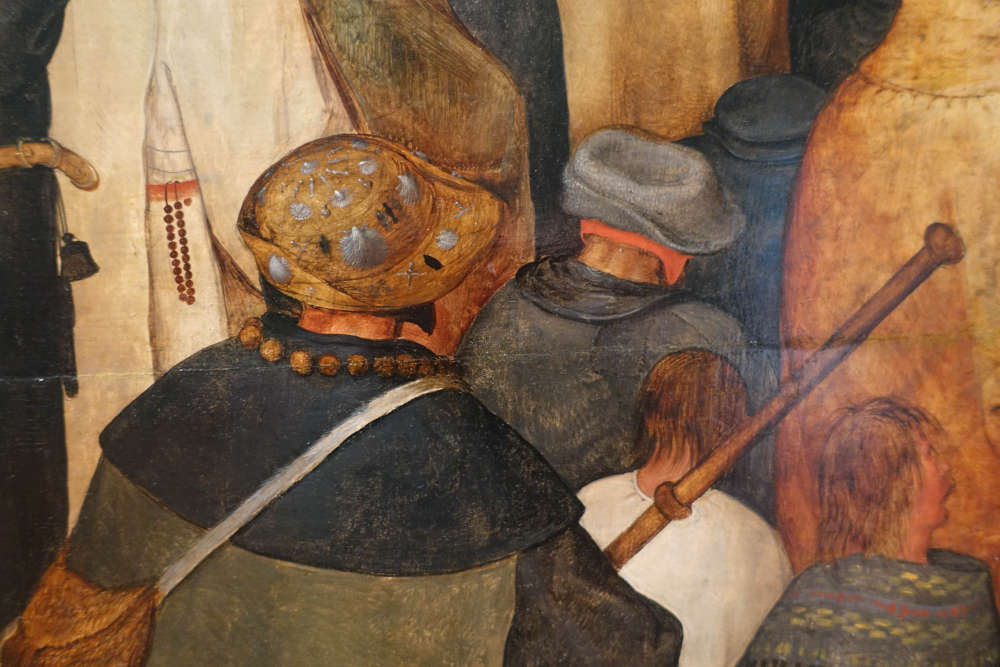
Hat of a commoner with numerous pilgrim tokens. Detail from the oil painting “Sermon of John the Baptist” by Jan Brueghel the Elder (1568-1625) after a 1566 painting by Pieter Bruegel. Photo: KW.
How important it was for some people in early modern times to protect themselves with such an amulet is not only shown by Plague talers but also by contemporary paintings. The man on “Sermon of John the Baptist” from 1566 is depicted with his back to the viewer, waring several amulets on his hat. Catholics were particularly fond of buying such talismans at popular pilgrimage sites.
But how should Protestants approach this matter? After all, they considered pilgrimages and the veneration of saints to be the work of the devil approved by the Pope. Protestants also had fears and problems, and did not want to do without divine protection. For these people, the workshop of Nickel Milicz created amulets of the new type that was so much to the liking of the reformer Johannes Mathesius. And he wasn’t the only one who liked them. The medals sold like hot cakes, in Wittenberg, Augsburg and Nuremberg, in Bohemia, Moravia and Silesia, in Lesser Poland and all over the Balkans.
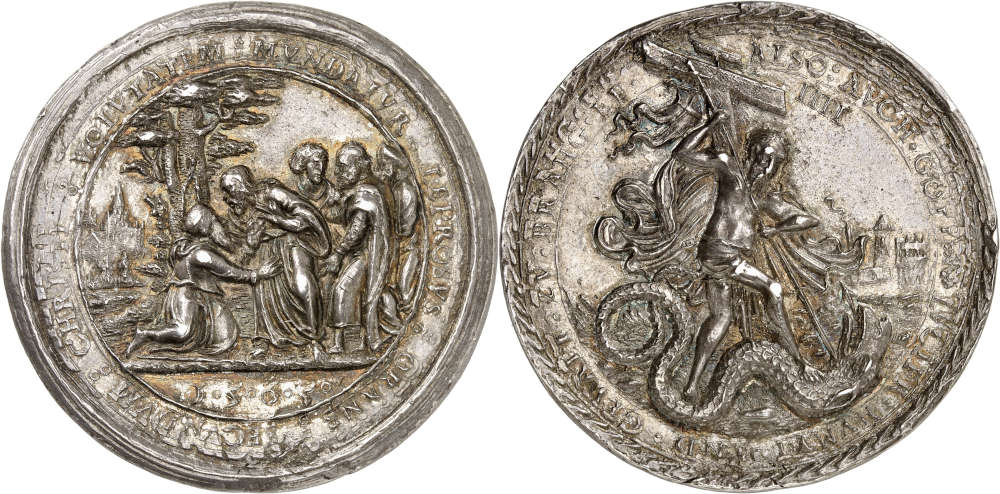
1565 silver medal, unsigned by Nickel Milicz or his workshop. Very rare. Minted original. Extremely fine. Estimate: 7,500 euros. From Künker auction 418 (29 January 2025), No. 194.
Sola Gratia: The Protestant Idea of Salvation
Consider, for example, a medal created in the workshop of Nickel Milicz around 1565. It is offered as lot No. 194 at Künker. It cannot be verified without doubt whether the piece was really created as early as in 1565 because the dies of Nickel Milicz and his father Wolf remained in the possession of their heirs. They were continued to be used and occasionally recombined.
Our example is a Protestant version of the Plague taler, presenting Christ as the guarantor of healing. One side shows the centurion of Capernaum mentioned in Matthew 8:8. He comes to Jesus and asks him to heal his servant with the words that are still used in the liturgy today in a slightly modified form (we are quoting the New International Version): “Lord, I do not deserve to have you come under my roof. But just say the word, and my servant will be healed.”
In this way, the depiction echoes one of Luther’s main themes: man owes his salvation to God’s grace alone. No institution, no interpretation of Scripture, no good deed, no prayer – only God’s grace can bring salvation, as the centurion of Capharnaum put it.
The other side also represents a Protestant message. At first glance, we might assume that this is St. George. However, this is not true. Protestantism distances itself from any form of veneration of saints. Instead, we see Christ in the pose of St. George stinging Satan in the form of a dragon with the shaft of the victory flag.
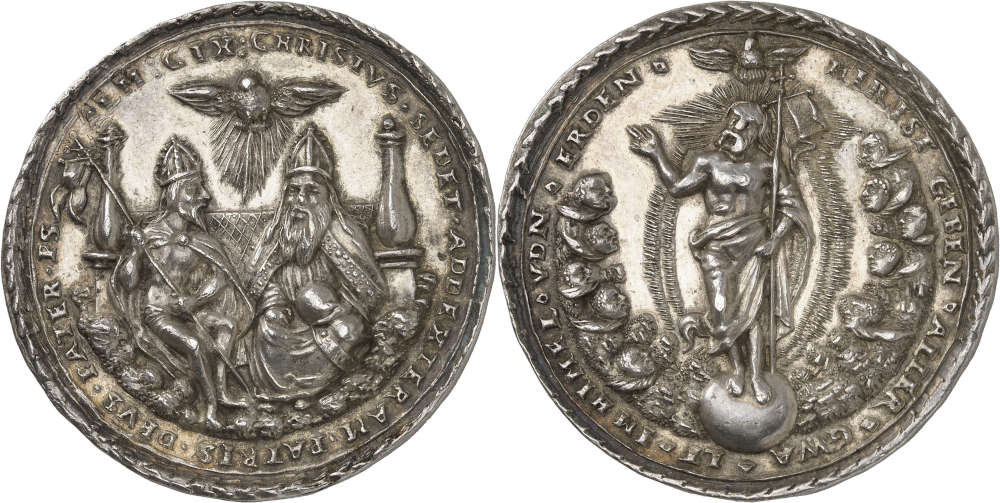
Silver medal n.d. (ca. 1565), unsigned by Nickel Milicz or his workshop. Very rare. Minted original. Extremely fine. Estimate: 6,000 euros. From Künker auction 418 (29 January 2025), No. 195.
This piece is also full of Protestant ideas. On one side, it shows the Holy Trinity, on the other side the Risen Christ standing on the globe with cross and banner as saviour. The dove of the Holy Spirit gives its grace to all those who seek salvation in Christ.
Milicz’s works were highly appreciated by his contemporaries, and their artistic value was recognized. This explains why Emperor Rudolf II bought the dies crated by Wolf and Nickel Milicz from their heirs.
A “Mobile” Renaissance
At this point it is worth mentioning that another function of the minted medals from the Ore Mountains has been suggested in recent times. They were struck in a period of extreme danger, when many people in the Balkans were expecting to flee from their homes due to the threat of the Turks. That’s why the idea of a “mobile Renaissance” was introduced, referring to all the easily transportable items that people could take with them if they had to flee their homeland and build up a new life somewhere else. It is assumed that religious issues from Joachimsthal served two functions. They were an amulet that protected its owner and a valuable investment. They provided their owners with divine support against the Turks and, at the same time, saved them from financial distress in the event of an escape.
In our day and age, we can well understand such a line of thought.
Bibliography
- Barbara Balážová, Der Planetenhumpen von Neusohl/Banská Bystrica. Meisterliches Objekt – sichere Anlage – elitäre Repräsentation. RIHA Journal 0142 (15 November 2016), https://journals.ub.uni-heidelberg.de/index.php/rihajournal/article/view/70194/71089, accessed on 13 December 2024
- Walter Cupperi, Martin Hirsch, Annette Kranz, Ulrich Pfisterer, Wettstreit in Erz. Berlin – Munich 2013
- Viktor Katz, Die Erzgebirgische Prägemedaille des XVI. Jahrhunderts. Prague 1932.
- Hermann Maué and Ludwig Veit (eds.), Münzen in Brauch und Aberglauben. Nuremberg 1982
- Thomas Winkelbauer, Ständefreiheit und Fürstenmacht. Länder und Untertanen des Hauses Habsburg im Konfessionellen Zeitalter. Vienna 2003







